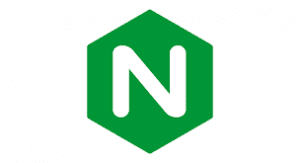Let us take learn more about nginx reverse proxy authentication ldap with the support of our Nginx support services at Bobcares.
Using Nginx as a reverse proxy, LDAP authentication

LDAP authentication refers to the process of authenticating clients against an LDAP (Lightweight Directory Access Protocol) server while utilizing Nginx as a reverse proxy.
LDAP is a protocol that is widely used to access and manage directory information such as user accounts and login credentials.
How does LDAP authentication with Nginx reverse proxy work?
It often works as follows:
- Configuration of Nginx: we must setup Nginx to function as a reverse proxy and enable authentication. The LDAP server data, such as hostname or IP address, port number. The LDAP search base where user accounts are kept, must be specified.
- The client makes the following request. The client (for example, a web browser) submits a request to Nginx to access a protected resource.
- Nginx requests the following credentials: If the requested resource needs authentication, Nginx intercepts the request and returns with the status code 401 Unauthorized, indicating that authentication is necessary.
Nginx may also transmit an HTTP challenge header, such as “WWW-Authenticate,” which specifies LDAP as the authentication mechanism.
- The client requests the user for their LDAP login credentials, generally a username and password, and sends them back to Nginx in an Authorization header.
- Nginx connects to an LDAP server: Nginx sends the specified credentials to the configured LDAP server for authentication. It searches the LDAP directory using the given search base and the supplied login and password.
- The LDAP server validates credentials. The given credentials are against the LDAP server’s directory. The LDAP server responds with a successful authentication result if the credentials are legitimate. Otherwise, it responds with an authentication failure.
- Nginx grants or refuses access: Nginx determines whether to give or deny access to the requested resource based on the LDAP server’s answer.
If the authentication is successful, Nginx forwards the request to the backend server, which subsequently provides the required content.
Benefits of LDAP authentication with Nginx reverse proxy
There are various advantages of using LDAP authentication with reverse proxy:
-
Centralizing user account management in a directory using LDAP simplifies user administration and maintains consistency across numerous services.
- Integration with current LDAP infrastructure: If the firm already has an LDAP server for user management, LDAP authentication with Nginx allows us to utilize that infrastructure and avoid duplicating user information.
- Security and scalability: LDAP authentication ensures that only authorized users may access protected resources by providing a secure way of confirming user credentials. Furthermore, LDAP can manage a huge number of users and effectively authenticate them.
- LDAP supports a wide range of authentication techniques, from simple username/password authentication to more complex approaches like Kerberos or certificate-based authentication.
This adaptability allows us to select the authentication technique that best meets your needs.
[Need assistance with similar queries? We are here to help]
Conclusion
To sum up we have now seen more on nginx reverse proxy authentication ldap with the support of our tech support team.
PREVENT YOUR SERVER FROM CRASHING!
Never again lose customers to poor server speed! Let us help you.
Our server experts will monitor & maintain your server 24/7 so that it remains lightning fast and secure.



0 Comments